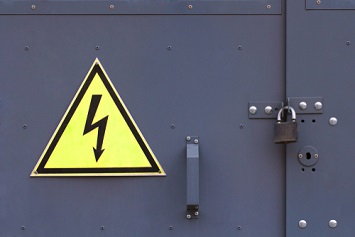In today’s rapidly evolving technological landscape, it’s critical for facilities and building operators to ensure the safety of their electrical infrastructure. One of the two primary electrical hazards are arc flash events, which can result in significant injury to workers and major disruptions to power operations.

What Is an Arc Flash?
Arc flash: a term that resonates profoundly with professionals in the electrical industry, signifying a formidable hazard. This hazard is most significantly recognized by an abrupt release of electrical energy—a sudden, explosive event that occurs when electrical current deviates from its intended path, traversing open air from one conductor to another or to ground. The severity of an arc flash’s potential damage can be behemoth, often overshadowing the awareness levels of the general populace. However, gazing into the depths of this threat are the frontline warriors of the electrical manufacturing industry, the electrical workers, who continually grapple with its inherent risk factors.
An arc flash is a universal concern encompassing a gamut of perspectives. From the viewpoint of electrical professionals, it represents a significant occupational hazard. The NFPA (National Fire Protection Association) and NEC (National Electrical Code) offer guidelines and standards to guard against arc flash incidents, anchoring their efforts in technical expertise and extensive research.
But dig deeper to find societal implications. It’s about inclusivity—the right for everyone, regardless of their profession, to operate in a safe environment. Underestimating the power of arc flash bears the risk of not just physical harm, but also operational losses on a business front, consequentially affecting a company’s reputation and customer trust.
Understanding the Risk of Arc Flashes
Arc flash and other arc-related events can result in fire, personnel injury, and damage to electrical equipment. These incidents can occur for several reasons, including foreign objects such as tools and hands reaching into live areas; degradation of insulating materials and connections over time; dust buildup; abrupt energy spikes; rodents, snakes, and spider nests; and loose electrical connections. Above all, personal safety is the No. 1 concern with arc flash incidents as these events are capable of producing a reaction strong enough to knock a person down, propel an object through the air, melt metal, and rival the blast decibel of a gunshot. Aside from personal safety, there are other secondary impacts like the cost of litigation, expensive equipment repairs, and time-consuming replacement efforts. Add to that the loss of production and there is a recipe for major setbacks.
An in-depth look at relevant data provides a more tangible understanding of the severity of the arc flash problem. A recent analysis drawing on trends from 2010 to 2020 indicates an average of 630 electric arc incidents a year, according to a Johns Hopkins University citation. Caution must be exercised with this number, as it is, fundamentally, an approximation. More importantly, the database’s reporting thresholds suggest a likely underrepresentation, failing to account for arc flash incidents in which injuries and fatalities were miraculously spared.
In translating the complexity of this issue into more manageable terms, research finds that approximately 1 in every 19 electrical incidents with injuries in the U.S. is reported to the Occupational Safety and Health Administration (OSHA). Relying on this same proportion and applying it to the number of “electric arc” incidents in OSHA’s database, the data again arrives at an estimated 630 such incidents occurring annually. This insight, once more drawing upon research by Johns Hopkins University, reveals the imperative need for collaborative innovation and ethically implemented safety measures to foster both a safer and more empowered working environment. This data further promotes a critical need for combined innovation, ethical safety implementation, and empowerment to nurture safer working environments. These statistical realities underscore the importance of an informed, safety-conscious approach to handling arc flash risks.
Diminishing Risk Through Reduction, Avoidance, Prevention, and Containment
The first step to prevention is awareness. No matter what the actual number of events is, an understanding that arc flash incidents can and do occur is fundamental. Recognizing the hazard is key, but the next step is to implement risk reduction techniques at all stages of the product life cycle. Equipment should align with established codes and standards such as those detailed by the NFPA. These standards address installation, operation, and maintenance of equipment, along with training and qualifications for electrical workers.
A body of significant research has contributed greatly to the industry’s understanding of arc flash phenomena. Their pioneering investigations have become cornerstones in the discourse around this subject. Ralph Lee’s work, “The Other Electrical Hazard: Electric Arc Blast Burns,” has left an indelible imprint on the field. Similarly, Craig Wellman’s comprehensive study, “OSHA Arc-Flash Injury Data Analysis,” has shaped many perspectives on prevention and mitigation. Recent literature reviews like the NFPA’s “Occupational Injuries from Electrical Shock and Arc Flash Events” exemplify efforts to keep the conversation relevant and vibrant in the face of evolving challenges. These efforts offer a solid foundation on which to build a better, safer future.
Sustainable progress lies in the power of consistent collaboration and transparent discourse among stakeholders, fostering an environment conducive to continuous learning and refinement of prevention strategies.
As the industry continues to grow, manufacturers need to remember that managing arc flash risks isn’t just an electrical industry concern but part of a broader dialogue about safety, innovation, and empowerment.

Antonio Di Vaira is the senior vice president for power products in North America and Central America at Schneider Electric.
